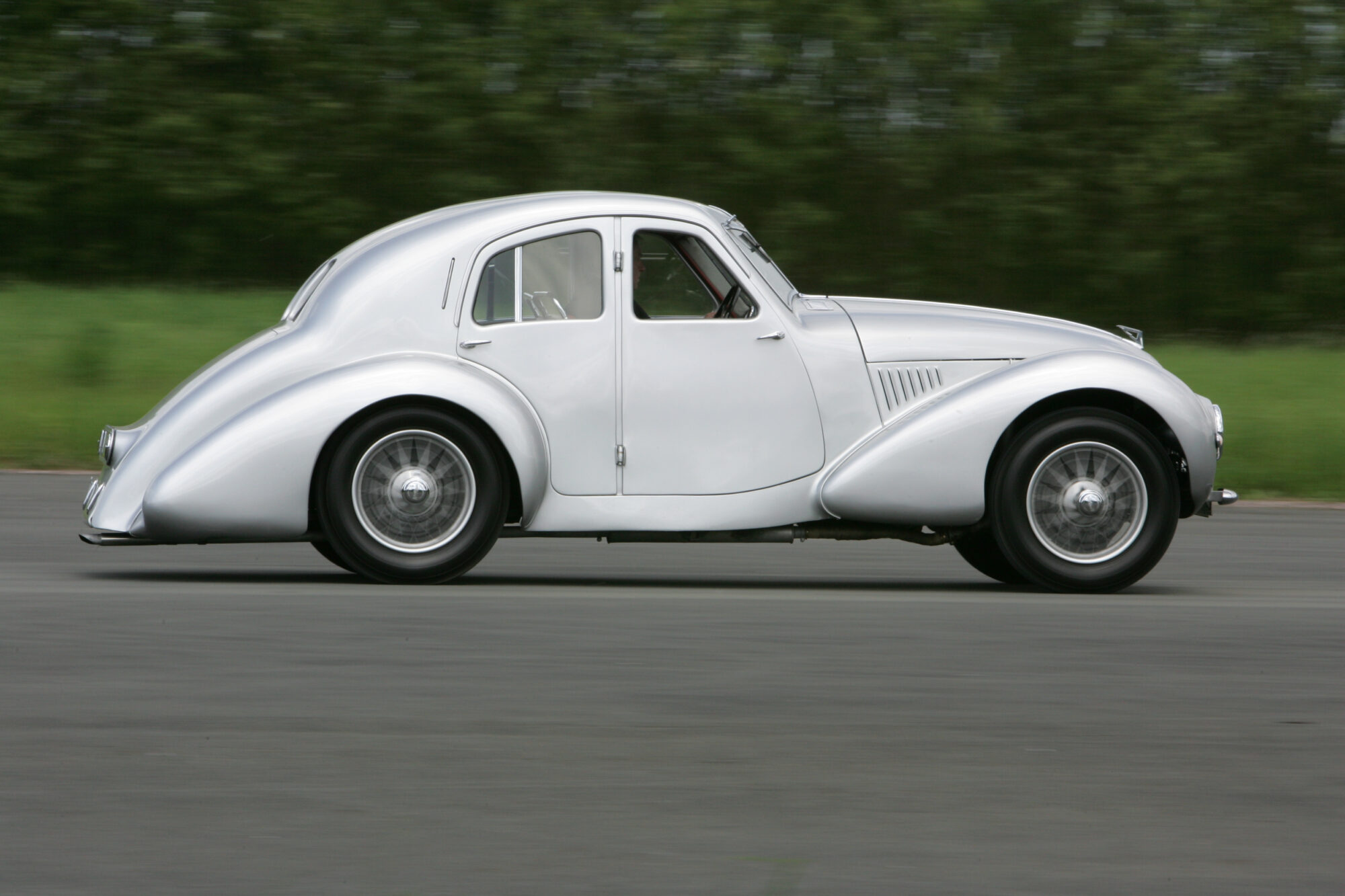Even though war had broken out when ‘Atom’ was completed, privileged journalists were allowed to test-drive the car, which was a four-door four-seater despite limitations on the lengths of steel tube available. A production version would have had greater wheelbase, giving more room for the rear passengers.
Gordon Sutherland, whose idea it had been, completed 90,000 miles on war work in ‘Atom’ between 1940 and 1947 (it would do 90 mph and there were no body rattles).


